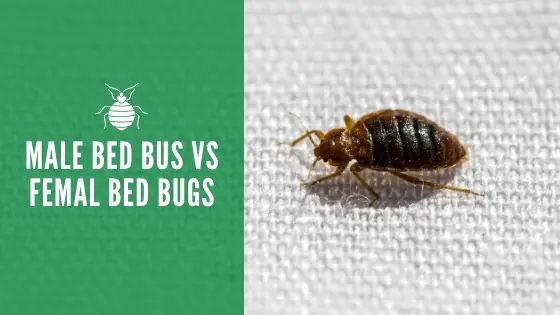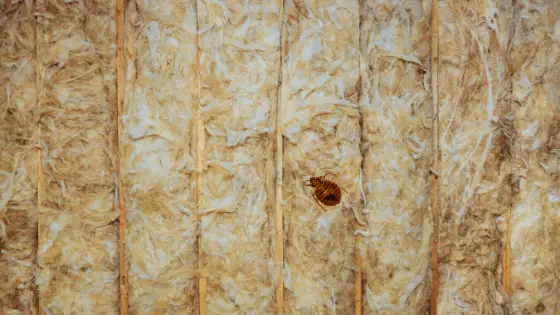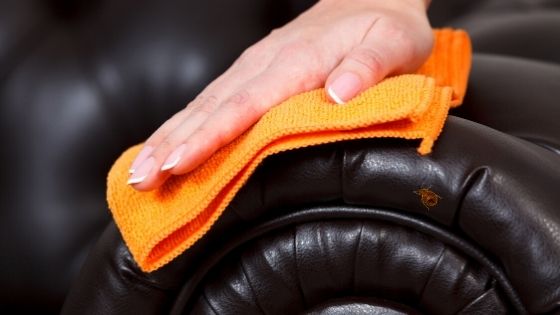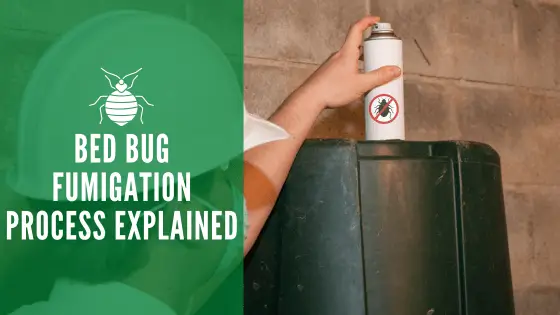Male vs Female Bed Bugs: Reproduction and Control

The thought of bed bugs nibbling away on you at night is enough to keep you up. These tiny parasites can bite and leave red marks when they feed on your blood. Keeping them away is a priority. Understanding more about them will help you reach your goal of a bug-free life.
Bed Bug Facts
Bed bugs are small reddish-brown insects about the size of a sesame seed that feed on the exposed skin of animals, including humans. They can hide easily in cracks and crevices. They are easily transmitted in places with high turnovers of nighttime guests like hospitals, shelters, and hotels.
In one survey, it was found that one in five Americans have experienced a bed bug infestation in their home at one time. They are three times higher in urban areas than rural ones. According to the same survey, bed bugs have been encountered on public transportation, in theaters, retail stores, medical facilities, places of employment, friend’s homes, and apartment buildings.
Many have reported getting bed bugs in luggage when returning from a trip, purchasing second-hand furniture, or trying on clothing in dressing rooms.
Bed bugs are in all 50 states, including Alaska and colder climates. They can survive several months without eating anything. When feeding, they eat for about five minutes and then retreat to a quiet place to digest. They can consume up to seven times their body weight in blood, which would be equal to us drinking 120 gallons of liquid at once.
How do Bed Bugs Reproduce?
Do female bed bugs need a male bed bug to reproduce? The most common form of reproduction in insects is sexual reproduction, which requires a male and female. Some insects produce through asexual reproduction in a process called parthenogenesis.
Insects that reproduce asexually include aphids, ants, parasitic wasps, some bees, and grasshoppers. Bed bugs only reproduce through sexual reproduction, which requires a male and female.
Is there a difference between male and female bed bugs? It is not easy to tell the difference between male and female bed bugs because, at first glance, they are similar. Females are usually larger but not by much, and you will have adults of different ages and sizes in a colony. The main difference is that the male has a pointed abdomen, and the female has a rounded one.
Both males and females must have access to blood to reproduce, which means that both will bite you. This is unlike mosquitoes, where only the females bite. The reproductive cycle begins with a male and female who have recently eaten a meal. They will then seek to mate.
The mating process for bed bugs is rather traumatic insemination for the female. The male pierces the abdomen of the female with a needle-like organ and inserts the sperm. The sperm travels around her abdominal cavity until it reaches the ovaries, where it fertilizes the eggs. The female then goes to seek a quiet location away from the males. Frequent injury from mating can kill the female bed bug or cause her to produce fewer eggs.
The female will usually try to remain close to a food supply and lay between 1-7 eggs each day. The eggs hatch in 7-10 days, and then the nymphs hatch. The nymphs reach adulthood in about five weeks. Then, they can begin reproducing. The average female adult bed bug lives to be about 12 to 18 months old and can produce between 200-500 eggs during her life.
Where Do Female Bed Bugs Lay Eggs?
Bed bugs are very good at hiding from humans and even better at hiding their eggs. Their eggs are so tiny that they can pass through the outside of a mattress covering to hatch inside. The eggs are clear to white in color. They easily stick to cloth or wood, but they usually do not stick to plastic or metal surfaces.
Bed bug eggs are tiny, but you can see them with the naked eye, especially the egg casing after the nymphs have hatched. The best way to find them is to use a flashlight and check for egg casings, rust-colored spots, or nymphs. When looking for bed bugs, you should check the room thoroughly, especially in hotels.
Bed bugs can fit in spaces the thickness of a credit card. These unwanted guests are attracted to the carbon dioxide we breathe and love to stay close to their hosts. You should check:
- Mattress edge seams
- Bedding
- Curtains
- Edges of carpets
- Chairs
- Couches
- Dressers
- Underneath the bed
- Behind the headboard
- Around the bed frame
- Closets
- Clothing
- Suitcases
- Boxes
Signs You Have Bed Bugs
One of the most noticeable signs that you have bedbugs is the appearance of tiny red bite marks. They bite while you are asleep, and they do not always appear as soon as the bite occurs. They might not appear until up to three days after the bite. This makes them easily mistaken for another type of rash.
Bed bug bites are typically arranged in a line or cluster of 2-4 bites. They occur most often on the neck, face, hands, and arms. They usually have a darker red center surrounded by a lighter red area, and they are itchy. They are not known to carry human diseases, but some people are allergic to them.
How to Get Rid of Bed Bugs
The first thing you need to do to get rid of bed bugs is to recognize that you have them, and since they only come out at night, you might not see them. Bites have been discussed earlier and are usually the first sign for most people. You also might notice something that looks like tiny rust spots or black spots on your sheets. Large numbers of bed bugs release pheromones that can smell like a wet towel, locker room, or almonds.
Having bed bugs does not always reflect poorly on your hygiene because they travel so easily. Keeping your home tidy and clutter-free can help you prevent them and get rid of them if you get them because they have fewer places to hide. Bed bugs can travel easily from home to home, so if your neighbors have them, you should start taking precautions. Be careful when bringing anything into your home, especially used clothing or furniture.
If you find that you have bed bugs, the first thing you should do is eliminate as many hiding places as possible. They can be killed effectively using the following methods:
- Heating to over 122 degrees Fahrenheit.
- Soaking items in cold water and freezing.
- Freezing dry items for at least 30 days.
- Diatomaceous Earth.
- Pesticide-free bug spray.
Sprays should not be relied on as the only means of control. You must use them with other preventative and long-term methods. Catching the infestation when it is small is the key. Because of the way bed bugs reproduce, infestations can take time and persistence to control.



